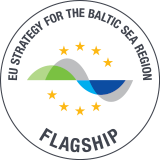Urban area
Garden East is an inner city neighbourhood of Kiel, situated on the Eastern side of the fjord. But at the same time, its natural connections with other neighbourhoods and the city centre are extremely limited. The port and the railway cuts off the natural links to the harbour and to the North, East and South, inner city highways re-enforce the sense of an urban island. Furthermore, there is an unfinished bridge, that leads from the district to the centre, but stops half through.
The dense urban scape is varied, with 4-5 story terraces from the start of the 20th century, post war public/social housing and some new well designed residential developments. This has newly landscaped open green spaces and the outdoor swimming pool of Katzheide. Thus, some good communal facilities compensate for a lack of recreational space in the neighbourhood. The heart of Gaarden East is Vinetplatz, with market stalls and lively outdoor cafes and events.
Population
The population of Garden East is around 18,500, and 58% of them have a migratory background, i.e. Turkish immigrant families. Due to cheap house rent, students and young people are also increasingly moving into the neighbourhood. The multicultural nature of the area is its core identity, also giving the neighbourhood a distinct role in Kiel. There is a varied and lively atmosphere and many signs of cultural diversity. But at the same time, the community suffers from unemployment and high numbers of recipients of social welfare.
Together with high density of population and indices of social disruption, the neighbourhood has many issues. This reflects the situation of many inner city neighbourhoods in many larger European cities. Certain areas “attract” marginal groups due to the openness of the neighbourhood, but at the same time compound the social pressures at the same time.
Challenges identified
A key issue for Gaarden East is the legacy of the district’s negative public image in Kiel. This also affects a negative or aggressive self-image in the Gaarden East itself. The reputation of Gaarden East is, in many ways, far more negative than the reality. Stigmatisation and ethnic/cultural segregation is an increasing issue. This is apparent in Gaarden, and generally in Kiel, as there are many ethnic minorities who feel marginalised. The “Sociale Stadt” program is the main driver of social change in Kiel, with Gaarden as one of the key districts prioritised for investment between 2017- 2020. There is a strong political motivation in the city to support a new strategy, particularly as existing strategies are failing.
Visions and aims
The aim is to generate a process of cultural revitalisation of Gaarden by reactivating the potential of the most culturally diverse neighbourhood. There is an awareness of the need to engage the community in a process of social innovation to trigger a new perspective on the qualities of the neighbourhood. It is important that this vision is played out in the public domain, and that the potential of the public spaces in the neighbourhood – both existing and also new – can act as points of meeting and exchange.
Cultural planning approach
The annual festival in Gaarden can act as a strong energizer and collective platform. The festival can link the local initiative to the key cultural players in the city. This project can mentor and support University of Fine Arts and Design; The Kiel Contemporary Art Museum to create innovative projects. Likewise, this project can acts as a mentor for local arts institutions in the process of becoming a visible in the neighbourhoods. This would attract external attention and address current reflection in question of identity, as well as “rebrand” the neighbourhood.
Documents
Diary of Gaarden-East click here.
Process booklet click here.
Baseline study click here.








